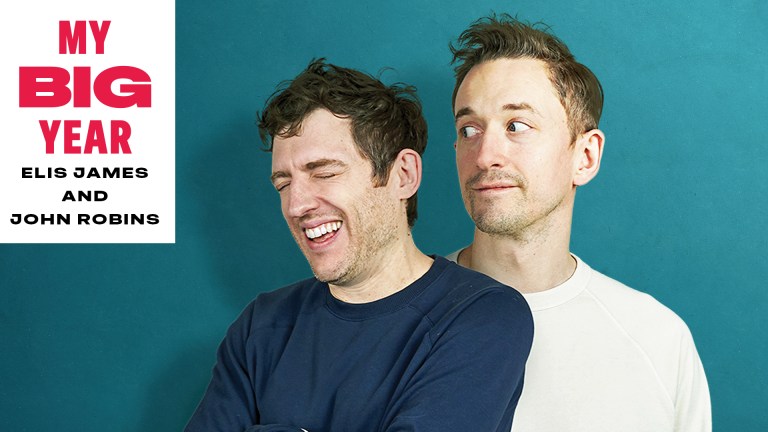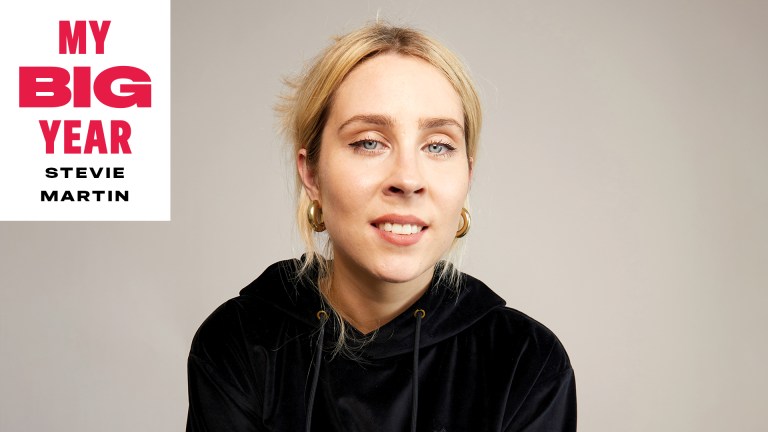In Danny Boyle’s 2004 film Millions, two boys find a pile of money and set about spending it (before the UK joins the Euro and the cash becomes worthless. This was a work a fiction, after all). The kids take a Big Issue vendor for pizza.
Why? Perhaps to show the innocent, easy, childlike logic of extending a hand to those in need – even if the adult world finds reasons not to help.
“This reminds me of another Danny Boyle film, 28 Days Later, where he used real brands like Coca-Cola to show realism,” adds Klein.
“Isn’t that odd? We’ve reached a point where to buy into a story we have to include brands. But The Big Issue works in a different way, it has all this cultural meaning about how we take care of each other and about giving people a chance of a better life… which Coca-Cola really doesn’t.”
When Russell T Davies revived Doctor Who in 2005, there would often be a Big Issue vendor in the background. The message here seems to be that this sci-fi show was set in the real world with real-world issues. And we need to look these issues in the face.
“My example is a much broader type of popular culture,” Klein says. “It is the old joke, ‘What did the slug say to the snail? Big Issue, mate?’
Advertising helps fund Big Issue’s mission to end poverty
“Joke lore is where you see the most shared elements of a society. Something has to be widely known to make a joke relevant and funny.”
So it was that, in the final series of Killing Eve, Eve Polastri (Sandra Oh) was trying to prove she is a terrible person, so she confessed to never having bought The Big Issue. Because, as we all know, buying The Big Issue means you are a good person. We are pop culture shorthand.
“The Big Issue is an incredibly well-known part of British culture. If you live here, you know it,” says Klein. “Including North American characters in British shows like Killing Eve. Once you live here, it is not long before The Big Issue is a part of the culture you reference.”
There are more instances. The video to Ed Sheeran’s breakthrough 2011 hit, The A Team, features a young woman selling The Big Issue and sleeping rough. Sheeran buys a magazine from her, sits with her, then tells her story in the song.
Another songwriter signalling that he is singing with the voice of the street – an authenticity mirrored by his set up of one man and acoustic guitar, even when playing stadiums.
Jimmy McGovern is another writer renowned for authenticity. Anthony (2020) was a TV drama imagining of the life Anthony Walker may have lived had he not been murdered by racists aged 18. We see teenage Anthony buy The Big Issue and try to help a vendor.
Advertising helps fund Big Issue’s mission to end poverty
“There’s now no way of knowing what Anthony thought of The Big Issue,” McGovern told us. “But he had a deep sense of social justice so I am bloody certain that, like me, he would have considered it to be a wonderful initiative.”
A Street Cat Named Bob may be the best-known example of The Big Issue in culture. James Bowen was a busker and Big Issue vendor when he met the cat that changed his life. In the books and subsequent films about their life together, The Big Issue signposts a route to redemption that Bob helped James realise.
And that brings us to Netflix and The Crown, and the scenes in the final series showing William and Kate meeting as teenagers over a copy of The Big Issue.
Because, as Professor Klein notes, The Big Issue is a more hopeful version of the homelessness trope.
“It’s not just about homelessness, but about a solution for people who find themselves in crisis.
“I’m not surprised it was chosen for the imagined meet-cute in The Crown. Because you probably wouldn’t see a teenage Kate Middleton at a soup kitchen.”
Advertising helps fund Big Issue’s mission to end poverty
Do you have a story to tell or opinions to share about this? We want to hear from you. Get in touch and tell us more.









